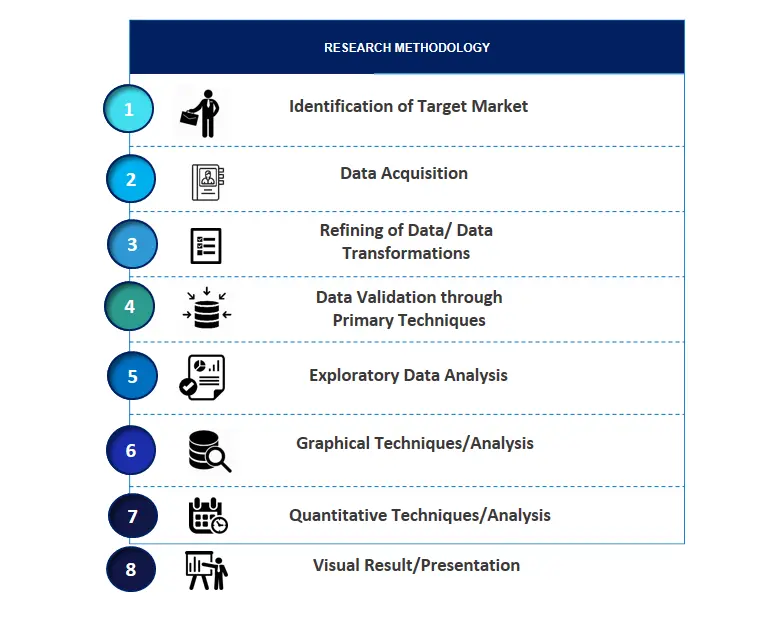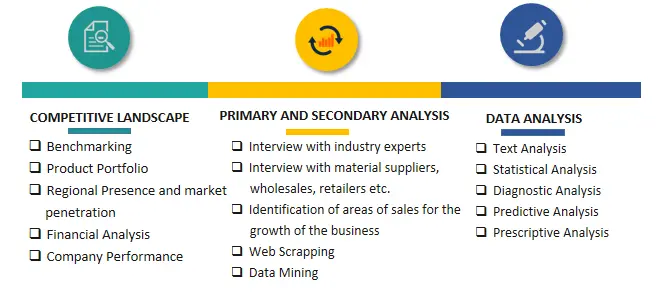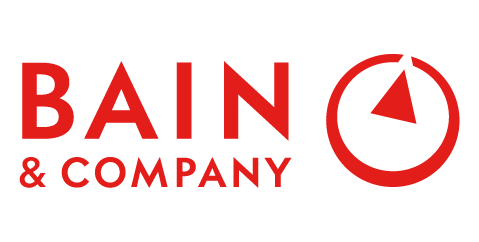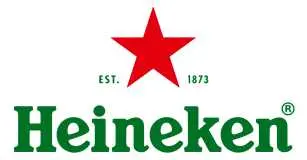
Global Heat Exchangers Market Insights, Size and Growth Forecast To 2027
Global Heat Exchangers Market by Type (Shell & Tube Heat Exchangers, Plate & Frame Heat Exchangers, Air Cooled Heat Exchangers and Others(Extended Surface Heat Exchangers and Regenerative Heat Exchangers)), By Material (Carbon Steel, Stainless Steel, Nickel and Others), By End-User Industry(Oil & Gas, Chemical, Energy, HVAC & Refrigerator, Food & Beverage, Power Generation & Metallurgy, Pulp & Paper and Others), and By Region (North America, Europe, Asia Pacific, South America, and Middle East & Africa)
| Published: Feb-2020 | Report ID: POAE2001 | Pages: 1 - 250 | Formats*: |
| Category : Power & Energy | |||
1.1. Market Modelling1.2. Product Analysis1.3. Market Trend and Economic Factors Analysis1.4. Market Segmental Analysis1.5. Geographical Mapping1.6. Country Wise Segregation
2.1. Identification of Target Market2.2. Data Acquisition2.3. Refining of Data/ Data Transformations2.4. Data Validation through Primary Techniques2.5. Exploratory Data Analysis2.6. Graphical Techniques/Analysis2.7. Quantitative Techniques/Analysis2.8. Visual Result/Presentation
4.1. Supply Chain Analysis4.2. Economic Factor Analysis4.2.1. Drivers4.2.2. Trends4.2.3. Opportunities4.2.4. Challenges4.3. Technological Landscape4.4. Competitors & Product Analysis4.5. Regulatory Framework4.6. Company market share analysis, 20194.7. Porter’s Five forces analysis4.8. New Investment Analysis4.9. PESTEL Analysis
5.1. Market Size & Forecast, 2016-20275.1.1. Demand5.1.1.1. By Value (USD Million)5.2. Market Share & Forecast, 2016-20275.2.1. By Type5.2.1.1. Shell & Tube Heat Exchangers5.2.1.2. Plate & Frame Heat Exchangers5.2.1.3. Air Cooled Heat Exchangers5.2.1.4. Others(Extended Surface Heat Exchangers and Regenerative Heat Exchangers)5.2.2. By Material5.2.2.1. Carbon Steel5.2.2.2. Stainless Steel5.2.2.3. Nickel5.2.2.4. Others5.2.3. By End-User Industry5.2.3.1. Oil & Gas5.2.3.2. Chemical5.2.3.3. HVAC & Refrigerator5.2.3.4. Food & Beverage5.2.3.5. Power Generation & Metallurgy5.2.3.6. Pulp & Paper5.2.3.7. Others5.2.4. By Region5.2.4.1. North America5.2.4.2. Europe5.2.4.3. Asia Pacific5.2.4.4. South America5.2.4.5. Middle East & Africa
6.1. North America Heat Exchangers Market Size & Forecast, 2016-20276.1.1. Demand6.1.1.1. By Value (USD Million)6.2. North America Heat Exchangers Market Share & Forecast, 2016-20276.2.1. By Type6.2.1.1. Shell & Tube Heat Exchangers6.2.1.2. Plate & Frame Heat Exchangers6.2.1.3. Air Cooled Heat Exchangers6.2.1.4. Others(Extended Surface Heat Exchangers and Regenerative Heat Exchangers)6.2.2. By Material6.2.2.1. Carbon Steel6.2.2.2. Stainless Steel6.2.2.3. Nickel6.2.2.4. Others6.2.3. By End-User Industry6.2.3.1. Oil & Gas6.2.3.2. Chemical6.2.3.3. HVAC & Refrigerator6.2.3.4. Food & Beverage6.2.3.5. Power Generation & Metallurgy6.2.3.6. Pulp & Paper6.2.3.7. Others6.2.4. By Country6.2.4.1. US6.2.4.2. Canada6.2.4.3. Mexico6.2.5. Price-Point Analysis6.2.6. Manufacturer & Distributor List (Top 5)6.2.7. Company Market Share (Top 3-5)6.2.8. Economic Impact Study on North America Heat Exchangers Market
7.1. Europe Heat Exchangers Market Size & Forecast, 2016-20277.1.1. Demand7.1.1.1. By Value (USD Million)7.2. Europe Heat Exchangers Market Share & Forecast, 2016-20277.2.1. By Type7.2.1.1. Shell & Tube Heat Exchangers7.2.1.2. Plate & Frame Heat Exchangers7.2.1.3. Air Cooled Heat Exchangers7.2.1.4. Others(Extended Surface Heat Exchangers and Regenerative Heat Exchangers)7.2.2. By Material7.2.2.1. Carbon Steel7.2.2.2. Stainless Steel7.2.2.3. Nickel7.2.2.4. Others7.2.3. By End-User Industry7.2.3.1. Oil & Gas7.2.3.2. Chemical7.2.3.3. HVAC & Refrigerator7.2.3.4. Food & Beverage7.2.3.5. Power Generation & Metallurgy7.2.3.6. Pulp & Paper7.2.3.7. Others7.2.4. By Country7.2.4.1. Germany7.2.4.2. UK7.2.4.3. France7.2.4.4. Italy7.2.4.5. Rest of Europe7.2.5. Price-Point Analysis7.2.6. Manufacturer & Distributor List (Top 5)7.2.7. Company Market Share (Top 3-5)7.2.8. Economic Impact Study on Europe Heat Exchangers Market
8.1. Asia Pacific Heat Exchangers Market Size & Forecast, 2016-20278.1.1. Demand8.1.1.1. By Value (USD Million)8.2. Asia Pacific Heat Exchangers Market Share & Forecast, 2016-20278.2.1. By Type8.2.1.1. Shell & Tube Heat Exchangers8.2.1.2. Plate & Frame Heat Exchangers8.2.1.3. Air Cooled Heat Exchangers8.2.1.4. Others(Extended Surface Heat Exchangers and Regenerative Heat Exchangers)8.2.2. By Material8.2.2.1. Carbon Steel8.2.2.2. Stainless Steel8.2.2.3. Nickel8.2.2.4. Others8.2.3. By End-User Industry8.2.3.1. Oil & Gas8.2.3.2. Chemical8.2.3.3. HVAC & Refrigerator8.2.3.4. Food & Beverage8.2.3.5. Power Generation & Metallurgy8.2.3.6. Pulp & Paper8.2.3.7. Others8.2.4. By Country8.2.4.1. China8.2.4.2. India8.2.4.3. Japan8.2.4.4. Australia8.2.4.5. Rest of Asia Pacific8.2.5. Price-Point Analysis8.2.6. Manufacturer & Distributor List (Top 5)8.2.7. Company Market Share (Top 3-5)8.2.8. Economic Impact Study on Asia Pacific Heat Exchangers Market
9.1. South America Heat Exchangers Market Size & Forecast, 2016-20279.1.1. Demand9.1.1.1. By Value (USD Million)9.2. South America Heat Exchangers Market Share & Forecast, 2016-20279.2.1. By Type9.2.1.1. Shell & Tube Heat Exchangers9.2.1.2. Plate & Frame Heat Exchangers9.2.1.3. Air Cooled Heat Exchangers9.2.1.4. Others(Extended Surface Heat Exchangers and Regenerative Heat Exchangers)9.2.2. By Material9.2.2.1. Carbon Steel9.2.2.2. Stainless Steel9.2.2.3. Nickel9.2.2.4. Others9.2.3. By End-User Industry9.2.3.1. Oil & Gas9.2.3.2. Chemical9.2.3.3. HVAC & Refrigerator9.2.3.4. Food & Beverage9.2.3.5. Power Generation & Metallurgy9.2.3.6. Pulp & Paper9.2.3.7. Others9.2.4. By Country9.2.4.1. Brazil9.2.4.2. Argentina9.2.4.3. Rest of South America9.2.5. Price-Point Analysis9.2.6. Manufacturer & Distributor List (Top 5)9.2.7. Company Market Share (Top 3-5)9.2.8. Economic Impact Study on South America Heat Exchangers Market
10.1. Middle East & Africa Heat Exchangers Market Size & Forecast, 2016-202710.1.1. Demand10.1.1.1. By Value (USD Million)10.2. Middle East & Africa Heat Exchangers Market Share & Forecast, 2016-202710.2.1. By Type10.2.1.1. Shell & Tube Heat Exchangers10.2.1.2. Plate & Frame Heat Exchangers10.2.1.3. Air Cooled Heat Exchangers10.2.1.4. Others(Extended Surface Heat Exchangers and Regenerative Heat Exchangers)10.2.2. By Material10.2.2.1. Carbon Steel10.2.2.2. Stainless Steel10.2.2.3. Nickel10.2.2.4. Others10.2.3. By End-User Industry10.2.3.1. Oil & Gas10.2.3.2. Chemical10.2.3.3. HVAC & Refrigerator10.2.3.4. Food & Beverage10.2.3.5. Power Generation & Metallurgy10.2.3.6. Pulp & Paper10.2.3.7. Others10.2.4. By Country10.2.4.1. Saudi Arabia10.2.4.2. UAE10.2.4.3. South Africa10.2.4.4. Rest of Middle East & Africa10.2.5. Price-Point Analysis10.2.6. Manufacturer & Distributor List (Top 5)10.2.7. Company Market Share (Top 3-5)10.2.8. Economic Impact Study on Middle East & Africa Heat Exchangers Market
11.1. Company Description11.2. Financial Analysis11.3. Key Products11.4. Key Management Personnel11.5. Contact Address11.6. SWOT Analysis11.7. Company Profile11.7.1. Alfa Laval11.7.2. Kelvion Holdings11.7.3. Danfoss11.7.4. Xylem11.7.5. API Heat Transfer11.7.6. Gunter11.7.7. Chart Industries11.7.8. Hisaka Works11.7.9. Johnson Controls International11.7.10. Hindustan Dorr-Oliver11.7.11. SPX-FLOW, Inc11.7.12. IHI Corporation11.7.13. FUNKE Wärmeaustauscher Apparatebau GmbH11.7.14. Thermowave GmbH11.7.15. Hisaka Works Ltd.11.7.16. Other Prominent Players
SPER Market Research’s methodology uses great emphasis on primary research to ensure that the market intelligence insights are up to date, reliable and accurate. Primary interviews are done with players involved in each phase of a supply chain to analyze the market forecasting. The secondary research method is used to help you fully understand how the future markets and the spending patterns look likes.
The report is based on in-depth qualitative and quantitative analysis of the Product Market. The quantitative analysis involves the application of various projection and sampling techniques. The qualitative analysis involves primary interviews, surveys, and vendor briefings. The data gathered as a result of these processes are validated through experts opinion. Our research methodology entails an ideal mixture of primary and secondary initiatives.



Frequently Asked Questions About This Report
PLACE AN ORDER
Year End Discount
Sample Report
Pre-Purchase Inquiry
NEED CUSTOMIZATION?
Request CustomizationCALL OR EMAIL US
100% Secure Payment






Related Reports
Our Global Clients
Our data-driven insights have influenced the strategy of 200+ reputed companies across the globe.




















